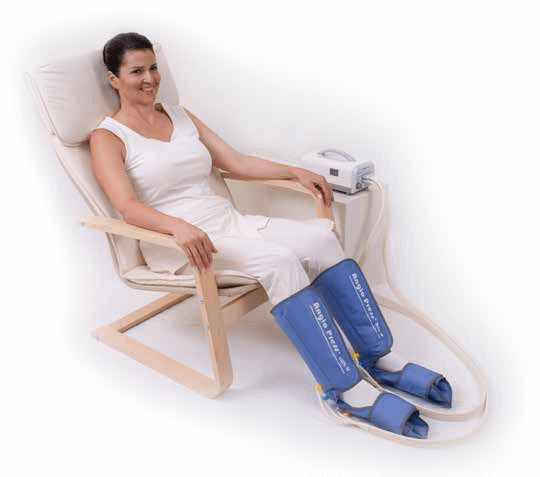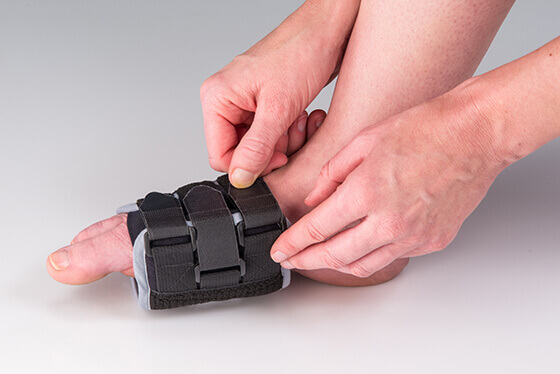Restless Leg Syndrome: 7 Effective Treatments


Written and verified by the doctor Nelton Abdon Ramos Rojas
Restless leg syndrome is a small but exasperating problem that much of the population suffers from when they’re trying to fall asleep at night.
This condition is also known as Willis-Ekbom disorder, which is neurological in origin and is characterized by cramping and tingling in the extremities, especially the legs.
The discomfort will disappear when the sufferer begins to move, usually by getting up and walking around.
The simple act of sitting in a chair, reclining on the sofa, or ling down to sleep can mean experiencing these annoying sensations, however.
You must keep in mind that you’re dealing with a chronic neurological disorder.
One thing that is known is that many cases may be of genetic origin, but some of the patients who experience this condition have other associated diseases: kidney failure, vitamin deficiency, pregnancy, side effects of certain medications…
A therapeutic approach is therefore based on improving the patient’s quality of life. For this, a multifaceted strategy is required.
First of all, certain medications will be administered to the patient, and may include dopamine agonists, anti-epileptics, or opioids.
The non-pharmacological approaches make up the portion of the treatment that we want to talk about in our space today.
1. Pneumatic compression for restless leg syndrome

The compression improves circulation in the legs and prevent blood clots from forming.
One of the origins of this disorder is a low concentration of oxygen in the extremities. Thanks to this compression device, it “reactivates” the circulation, as if you were exercising while you rest.
It’s useful and worth a try. It would be enough to use it for just half an hour to 45 minutes before going to sleep.
You can find this type of compression device in orthopedic centers and specialized pharmacies.
Discover causes of tingling in the hands and legs
2. Vitamins and minerals to add to your diet
Your doctor will do some analysis and run tests to find out if your restless leg syndrome is caused by a lack of minerals like iron, or other nutrients, such as vitamin D.
To prevent and treat this type of neurological disorder, it’s also essential that you don’t forget to get adequate amounts of other essential nutrients:
- Magnesium
- Vitamins D, C, and E
- Iron
3. Exercise can help treat restless leg syndrome

Be sure to perform some of these simple exercises every day.
- Walking for half an hour
- Swimming
- Cycling
- Dancing
- Zumba
- Aerobics
- Tennis
You did not know? Zumba: why is it so popular?
4. Yoga, relaxing and good for stretching
As you already know, yoga works both your body and mind. This will help you relieve stress and anxiety while achieving a state of inner calm to enjoy better rest at night.
The ability of yoga to treat restless leg syndrome is also immense.
This is the case for the following reasons:
- Stretching improves circulation and muscle tone.
- Exercises are accompanied by breathing techniques that provide more oxygen to your body.
That’s why you should perform a good yoga session at home every day or go to yoga classes where your instructors can tell you the best exercises for your situation.
5. Wrapping your feet

It’s best if you learn to sleep while wearing these special wraps for your feet.
6. Hot-cold treatments
You may know that hot-cold treatments are very popular, but that doesn’t mean they are less effective.
Something as simple and affordable as applying cold compresses followed by hot compresses can improve circulation and alleviate cramping and tingling while making your night go much better.
7. Teas for restless leg syndrome

Don’t forget that your treatment will be very specific, and certain medicinal plants can interact with your medications.
It’s best to only consume one or two cups of these teas a day, therefore. Ideally you should drink one cup before going to bed.
These are the most effective natural teas for restless leg syndrome.
- Sage
- Valerian root
- Linden blossom
- White hawthorn
- Horsetail
To conclude, despite the fact that this is a chronic disorder, the right medical approach and certain other strategies that we’ve mentioned here can improve your quality of life remarkably.
All cited sources were thoroughly reviewed by our team to ensure their quality, reliability, currency, and validity. The bibliography of this article was considered reliable and of academic or scientific accuracy.
- Chik, Y., Charlene, G., & Salas, R. (2010). Metodología, diagnóstico y terapéutica para el síndrome de piernas inquietas TT – Updating restless legs syndrome. Salud(i)Ciencia (Impresa). https://doi.org/10.2197/ipsjjip.19.153
- Diego GarciaBorreguero, I. C. (2017). Síndrome de las piernas inquietas. BMJ.
- Allen, R. P., Picchietti, D., Hening, W. A., Trenkwalder, C., Walters, A. S., Montplaisi, J., … Zucconi, M. (2003). Restless legs syndrome: Diagnostic criteria, special considerations, and epidemiology. A report from the restless legs syndrome diagnosis and epidemiology workshop at the National Institutes of Health. Sleep Medicine. https://doi.org/10.1016/S1389-9457(03)00010-8
This text is provided for informational purposes only and does not replace consultation with a professional. If in doubt, consult your specialist.








